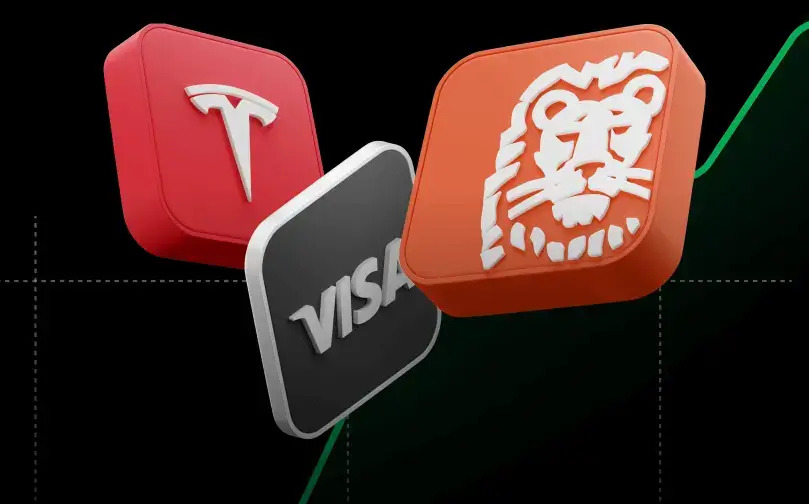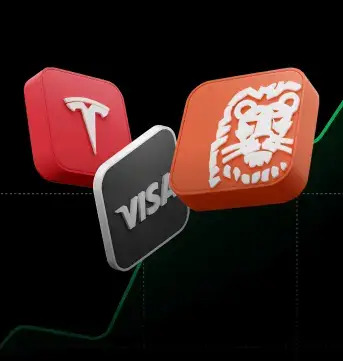One of the best things to keep in mind then is simplicity. Let’s begin step by step with simple terms and definitions that will be used in your trading journey.
One of the best things to keep in mind then is simplicity. Let’s begin step by step with simple terms and definitions that will be used in your trading journey.
Since the recording of these videos, negative balance protection has come into force from 02.10.17. This means that whilst trading losses cannot exceed funds in your account, your capital is still at risk.
In this lesson you can learn:
- What leverage is and why it’s crucial in trading CFDs
- What stop loss and take profit orders are and how you could use them
- What the difference is between ask price and bid price
Trading the markets can seem extremely daunting and complicated when you first start out. With a large amount of information easily accessible online, as well as ever-increasing ways to interpret charts, data and fast-moving markets, it’s easy to feel overwhelmed or succumb to the fear of the unknown. One of the best things to keep in mind when learning how to trade is simplicity. Let’s begin step by step with basic terms and definitions that will use on your trading journey.
What Is Leverage?
Leverage allows you to gain a large exposure to a market for a relatively small initial deposit. Whenever you see a percentage like 5% or 10:1 when referring to initial deposit, this is the amount of leverage available on this particular market.
Let's compare leverage with traditional investing. If, for example, you wanted to purchase 10,000 shares of Barclays and the share price is 280p, your total investment would cost you £28,000, not including the commission or other fees your broker would charge for the transaction.
With CFD trading, however, you would only need a small percentage of the total trade value to open the position and maintain the same level of exposure. Please remember that when trading CFDs you won’t actually own the underlying asset.
Let's look at an example of how this would work in practice:
Let’s suppose that XTB gives you 5:1 (or 20%) leverage on Barclays shares. In this case you would only need to deposit an initial £5,600 to trade the same amount.
If Barclays shares rose 10% to 308p, the value of the position would be £30,800. So with an initial deposit of just £5,600, this particular CFD trade could make a profit of £2,800. That’s a 50% return on your investment, compared to just a 10% return if the shares were bought physically.
If Barclays shares declined 10% to 252p, the value of the position would be £25,200. So with an initial deposit of just £5,600, this particular CFD trade would make a loss of £2,800. That’s a -50% loss on your investment, compared to just a -10% loss if the shares were bought physically.
Benefits and Risks of Leverage
| Benefits | Risks |
|---|---|
| Leverage can enable you to get the most out of your investment funds by being able to trade large positions and committing just a fraction of the trade value as an initial deposit. | Just like your gains can be magnified, so can your potential losses. |
| You can also take much larger positions than you would otherwise be able to with physical purchases. | If the market goes against your positions, you could lose all your account funds, so it is important to understand how to manage your level of risk when trading. |
| Your returns as a proportion of your initial investment can be much greater. | |
| You can make your capital go further by investing or trading in a range of different assets. |
In the world of retail FX & CFD trading, use of leverage is key.
What Are Pips?
A pip stands for ‘percentage in points’.
A pip is the smallest price change that a market can make. Pip size changes across most markets.
For example, you’ll notice that most currencies are priced to four decimal places, meaning that GBPUSD moving from 1.2545 to 1.2546 is a movement of one pip. However, one pip in the USDJPY pair is equivalent to a move in price of 0.01, as that particular pair is only priced to two decimal places.
You can determine how much you gain or lose per pip using lot size to set the volume of your trade. For example, a 1 lot transaction on the EURUSD gives a pip value of £7.62.
What this means is that if the market moves in your favour by 10 pips, you would generate a profit of £76.20 (7.62 x 10). Equally however, if the market moves against you by 10 pips, then you would generate a loss of £76.20 (7.62 x 10). It is very important to know the pip value before opening a transaction on the market to fully understand the size of your potential profit or loss.

What Is Bid and Ask Price?
When trading financial markets, you are provided with two prices: the ask (buy) price and the bid (sell) price.
The bid price is always lower than the ask price and the difference between the ask and bid price is called the spread, which is also one of the costs of opening a position on any market.
As an example, if the market window on your trading platform quotes EURUSD at 1.13956/1.13961, then this would mean that the bid price is 1.13956 and the ask price is 1.13961.

When going long or ‘buying’ on a specific instrument, your position will be opened on the ask price and closed on the bid price. On the other hand, when you go short or ‘sell’ your position will be opened on the bid price and and closed on the ask.
What Is the Spread?
The spread on financial markets is the difference between the buy (ask) price of an instrument and the sell (bid) price of an instrument. When placing a trade on the market, the spread is also the main cost of the position. The tighter the spread, the lower the cost of trading. The wider the spread, the higher its costs. You can also view the spread as the minimum distance the market has to move in your favour before you could start earning a profit.
For example, let’s say our EURUSD market is quoted with a buy price of 1.0984 and a sell price of 1.0983, so the spread is calculated by subtracting 1.0983 from 1.0984, giving a total spread of 0.0001 or 1 pip. Once you’ve placed a trade on the EURUSD market and the market moves at least 1 pip in your favour, your position can begin generating profits. This is also the reason why when you first place the trade, you’ll start off making a loss.
How to Understand the Cost of Spread with xStation
If you’re using MT4, you would need to calculate the monetary value of the spread manually. One of xStation’s functionalities, however, is an advanced trading calculator, which instantly determines the cost of the spread depending on your transaction size. In the example below, a 1 lot transaction on the EURUSD with a spread of 1.1 pips provides a monetary value of £8.38, for the spread.
What Is Stop Loss?
Experienced traders will testify that one of the keys to achieving success on financial markets over the long term is prudent risk management. Utilising a stop loss is one of the most popular ways for a trader to manage their risk, around the clock.
What is a Stop Loss Order?
A stop loss is a type of closing order, allowing the trader to specify a specific level in the market where if prices were to hit, the trade would be closed out by our systems automatically, typically for a loss. This is where the name Stop Loss originates from, because the order effectively stops your losses.
How does a Stop Loss order work in practice?

Let’s take a look at the example above. The trader has opened a long position on EURUSD in expectation that it will increase in value above 1.13961, which is shown by the first line. You’ll notice a second line below that, which is a Stop Loss set at 1.13160. This means that if the market falls beneath this level, the trader’s position will be automatically closed at a loss, and the trader will be protected from any additional lossed should the price move lower. A Stop Loss helps to manage your risk and keep your losses to an acceptable and controlled minimum amount.
Whilst Stop Loss orders are one of the best ways to ensure your risk is managed and potential losses are kept to acceptable levels, they don’t provide 100% security.
Stop losses are free to use and they protect your account against adverse market moves, but please be aware that they cannot guarantee your position every time. If the market becomes suddenly volatile and gaps beyond your stop level (jumps from one price to the next without trading at the levels in between), it’s possible your position could be closed at a worse level than requested. This is known as price slippage.
What Is Take Profit?
A Take Profit order is an order that closes your trade once it reaches a certain level of profit. When your Take Profit order is hit on a trade, the trade is closed at the current market value. Although it halts any further advance in profit, it guarantees a specific profit after a level has been hit.
How Does a Take Profit Order Work in Practice?

Let’s take a look at the previously mentioned example. The trader has opened a short position on EURUSD in expectation that it will decrease in value below 1.13941, which is shown by the first line. You’ll notice a line below that, which is a Take Profit set at 1.12549. This means that if the market falls towards this level, the trader’s position will be automatically closed at a profit - and therefore the trader is protected from any additional price moves lower. However, it also halts any further advance in profit if the market falls further. The specific profit will be taken from the table and the position will be closed.
This content has been created by XTB S.A. This service is provided by XTB S.A., with its registered office in Warsaw, at Prosta 67, 00-838 Warsaw, Poland, entered in the register of entrepreneurs of the National Court Register (Krajowy Rejestr Sądowy) conducted by District Court for the Capital City of Warsaw, XII Commercial Division of the National Court Register under KRS number 0000217580, REGON number 015803782 and Tax Identification Number (NIP) 527-24-43-955, with the fully paid up share capital in the amount of PLN 5.869.181,75. XTB S.A. conducts brokerage activities on the basis of the license granted by Polish Securities and Exchange Commission on 8th November 2005 No. DDM-M-4021-57-1/2005 and is supervised by Polish Supervision Authority.



